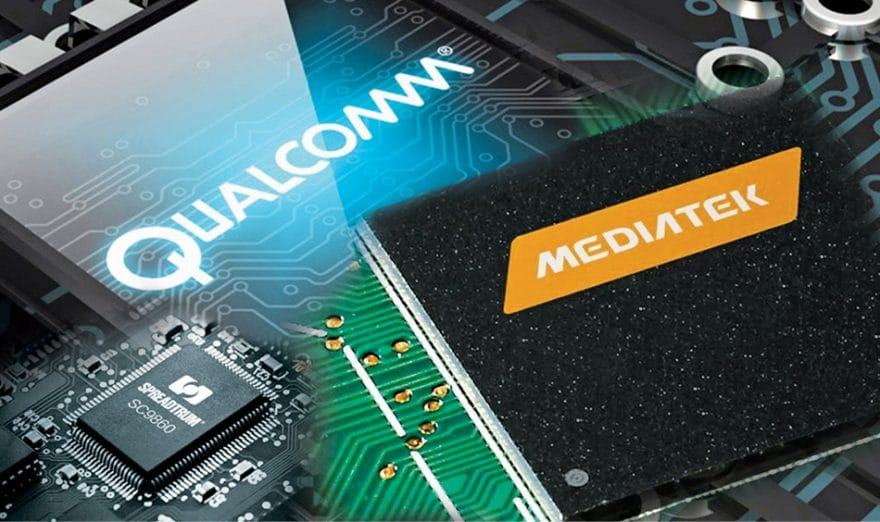 India is turning out to be a battleground for the leading chip makers. Qualcomm, MediaTek and Spreadtrum are gearing up to gain maximum market share in this domain. These major players are continuously enhancing the development and design capabilities of their products and services. They are also expanding their footprint by opening up new facilities across the country.
India is turning out to be a battleground for the leading chip makers. Qualcomm, MediaTek and Spreadtrum are gearing up to gain maximum market share in this domain. These major players are continuously enhancing the development and design capabilities of their products and services. They are also expanding their footprint by opening up new facilities across the country.
By Abid Hasan
There has been a quantum leap in what chip makers are offering the Indian market today and there is a reason for this. In October 2017, India dislodged the US to become the second largest smartphone market in the world, after China. Indian mobile phone shipments grew by 23 per cent in 2017 compared to 2016, of which 40 million were smartphones, a report from tech analyst firm Canalys states.
By 2022, the electronics market in India is expected to increase to US$ 400 billion. While the total production of electronics hardware is expected to reach US$ 104 billion by the year 2020.
With such immense opportunities for smartphone makers, chip makers naturally want to cash in on their chances.
Current market sentiments
India is one of the fastest countries to adopt 4G. This has created multiple opportunities for original equipment manufacturers (OEMs) to position their products to consumers.
“In a market where around 50 per cent of mobile Internet users are still on 2G, the sentiment in India is naturally positive and the market size is directly proportional to the demand for smartphones,” says Sachin Kalantri, director, product marketing, Qualcomm India.
The Indian chip market is shifting from 3G to 4G, and from feature phones to smartphones and LTE models. Due to the high demand and the potential for 4G feature phones in India, chip manufacturers are coming up with enhanced products. Some of these have been designed and developed by Indian engineers.
Kalantri shares that the affordable data tariffs and wider 4G network coverage, coupled with a wide variety of handset options for consumers across multiple brands and price segments, will continue to drive the demand for the next few quarters.
“We see the interest in products with built-in intelligence grow as the consumer becomes more and more technology-conscious. And the market has already started responding with smart electronics and consumer durables with intelligent functions and logic,” says Kuldeep Malik, country head, corporate sales international, MediaTek India.
Growth in the Indian chip market
India is the biggest growing market for all the chip manufacturers. There is a sense that around 230 million chipsets were sold in India in 2017.
Neeraj Sharma, country head, Spreadtrum Communications says, “Though China is currently the biggest market, it isn’t growing. Over the last few quarters, it’s been going down while the Indian market is growing. We are hoping it will grow at an annual average rate of 15-20 per cent.”
According to the Ministry of Electronics and Information Technology (MeitY), nearly 2,000 chips are being designed every year in India, with over 20,000 engineers working on various aspects of chip design and verification.
This has spurred the growth prospects for the Indian semiconductor industry as well. While mobile devices will be the predominant growth engine, the market is also seeing sustainable demand in the automotive electronics, communications and broadband equipment sectors. The Indian semiconductor and smart devices ecosystem is growing – not just in terms of demand but also responsive supply.
The upcoming battle

Until last year, 4G LTE was the battleground for chip manufacturers; now, 5G is the new entrant in the mobile chip domain. Though still at a nascent stage, it will evolve significantly in the coming days. However, Neeraj Sharma disagrees, saying, “I believe LTE will continue its robust growth and I don’t see any commercial roll-out happening in 5G till 2019 or 2020.”
Sources in MediaTek and Qualcomm feel that 5G technology is the next wave in this industry, and will act as a game changer.
“We have been working on 5G for many years, building upon our longstanding expertise in 3G, 4G and Wi-Fi,” says Kalantri of Qualcomm.
Qualcomm has already previewed its first reference design for the testing and optimisation of 5G technology within the power and form factor parameters of a smartphone. It has also collaborated with industry leaders across the mobile ecosystem for 5G NR (new radio) trials.
MediaTek is upbeat about the new technology and views 5G as an opportunity and not a battleground.

Malik of MediaTek says, “As we look at the smartphone industry’s expansion globally, the mid-market segment has the most promise for growth. Countries such as India (along with China) lead the way with consumers who want smartphones that offer what we know as the ‘New Premium’—a mix of affordable devices that deliver the latest features and performance, all at the same time.”
Local manufacturing
Local manufacturing in India is yet to take off with chip manufacturers shying away from taking this step. Some feel it’s the government policies as well as the heavy investment required that are the roadblocks, and it’ll take considerable time to overcome both obstacles and initiate local manufacturing.
Chipset manufacturing is a capital-intensive business requiring huge investments in setting up a fab. Such plants are typically set up in geographies where the consumption of chipsets is high. Sharma feels that manufacturing in India can wait. He adds, “We should work on designing in India, since even in China, fabs are being set up only now. Once we bring design capabilities to India there will be more jobs and employment in the country.”
Though local manufacturing still feels like a distant dream for electronics manufacturers, recent moves by the government of India may act like a stepping stone to make that dream a reality.
In a recent development, the government has increased the customs duty on several electronic items including televisions, mobile phones and microwaves, making the import of these goods more expensive. The customs duty on pushbutton phones, including mobiles, and on smart electricity meters has been increased to 15 per cent, from 10 per cent, as per a notification issued by the Ministry of Finance.
This notification is bound to impact the market and could work as a turning point to boost local manufacturing. The chip manufacturers are also looking forward to the upcoming Union Budget, which they hope will offer major incentives to the electronics industry.
The high growth segment
Mobile phones in the range of US$ 100 – US$ 200 comprise the fastest growing segment. India is becoming a market dominated by the segment now referred to as ‘New Premium’ —affordable devices that deliver the latest features and performance, challenging the smartphone status quo. This can mean new form factors, new camera specs or even new modular designs.
All the chip manufacturers are expecting to grow in this sector. The US$ 100 -US$ 120 price segment is expected to be the major contributor to 4G device sales.
“The growth seems to be positive and 70 per cent of feature phone users will switch to smartphones. The maximum growth will be witnessed in the US$ 100 – US$ 200 smartphone price band,” Sharma confirms.
The numbers game

Qualcomm, MediaTek and Spreadtrum have seen good growth in 2017. Globally, Qualcomm clocked revenues of a whopping US$ 22.3 billion. While announcing the company’s fourth quarter results, Steve Mollenkopf, CEO of Qualcomm Incorporated, said, “We continue to see strong growth trends for global 3G/4G device shipments and are focused on protecting the established value of our technologies and inventions. We are leading the industry to 5G, and are well positioned with our product and technology leadership to continue our expansion into many exciting new product categories, such as automotive, mobile computing, networking and the Internet of Things.”
Taiwanese chip maker, MediaTek’s third quarter results were also good. Its third-quarter global revenue was US$ 2.12 billion (NT$ 63,651 million), up 9.6 per cent sequentially, and down 18.8 per cent, year-over-year. The quarter-over-quarter increase was mainly due to increased seasonal demand of certain consumer electronics products.
The new disruptor in the market, Spreadtrum Communications, has robust plans for India and is successfully riding on the back of Reliance Jio feature phones. The chip maker is also expecting high growth from the India market by the end of 2017 on account of the increased demand for smartphones.
“We have been growing in India in double digits since 2012-13. It is now the second largest mobile phone market. We are expecting 20 per cent business growth by the end of this year, compared to last year,” said Leo Li, chairman, CEO and president, Spreadtrum, while speaking to the media in November 2017.
Spreadtrum claims to have a 45 per cent market share in the Indian mobile phone chip market, of which 20-25 per cent is for smartphones and the remaining is for feature phones.
On the other hand, MediaTek claims to have close to a one-third share of the total smartphone chip market in India.
There is no doubt that the smartphone segment is going to grow in 2018 and that the battle for the chip market is not going to be a cakewalk for the main players. With 5G coming in, the demand for premium smartphones will provide a much needed boost to the chip manufacturing industry.




























